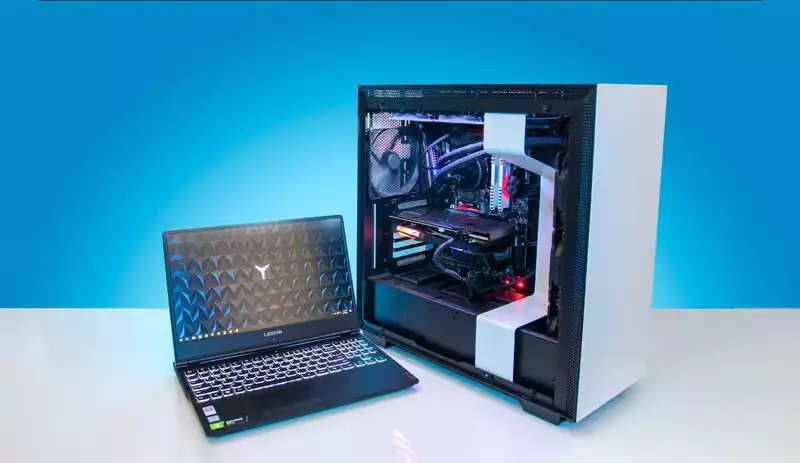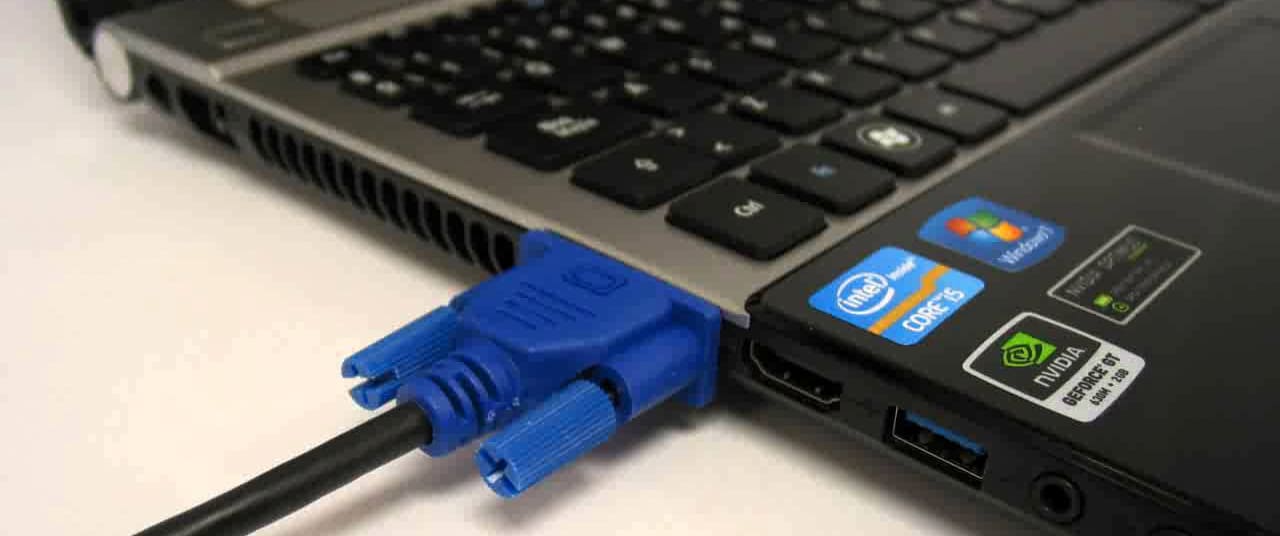You can also be interested in these:
- How to clean a matte computer screen
- How to connect Xbox to laptop screen as a monitor
- How to know what is my screen resolution easily
- How to record your screen on Widows 11
With the introduction of compact computers and with companies allowing more of their employees to work from home, sometimes it’s necessary for you to have two monitors connected to the same computer. This is a common setup for gamers and streamers, but allows people who are working from home to be able to see multiple website windows, spreadsheets, or inboxes at once. It can also provide a remedy if your laptop or main computer is working fine, but the main monitor is not. There are several ways you can go about to connect CPU to laptop as a monitor. Here we explain the best and most practical solutions.

Buying a new monitor
The simplest solution on how to connect CPU to laptop as a monitor for your main desktop computer is just buying one and then setting it up for your use. This option is probably the quickest way to remedy your situation, but it’s not the cheapest or the quickest. However, if you have a spare computer or laptop, you can utilize their monitors as an extra one for your main computer. In this article, you’ll learn step by step on how to connect a cpu to a laptop without a monitor.
Connecting the CPU to laptop together
There are two ways that this can be performed. The first is through connecting your laptop to a computer tower that has two VGA (Video Graphics Array) ports. If your computer tower only has one port that’s already being used by a computer monitor, you won’t be able to connect your laptop to it. However, if your computer tower has a DVI (Digital Visual Interface) port as well as a VGA port, you can use that as a substitution.
The VGA cable approach
You’d first need to have a VGA cable (or DVI cable, if your computer doesn’t have a second port) to connect your laptop to your computer tower. Please make sure you’re performing this while the laptop and computer are switched off. You’ll need to make sure that the cable is screwed in securely when connecting it to both ports; otherwise, you won’t be able to see anything. Then, switch both the computer tower and the laptop on.

Once both are on, use the computer’s mouse to right click on the home screen on the computer you will be using as your main monitor. If you’re working with a desktop and want to make your laptop the second screen, you’ll be following the same steps, just with the different computers.
When right clicking, you should be getting a small dropdown of different selections. You’ll need to click on the selection that says either ‘Personalize’ or ‘Display Properties.’ Please note that these options may be different depending on the type of computer you have, so make sure you’re familiar with your tab names before selecting them. You’ll then need to select ‘Display Settings’ or your computer’s equivalently named tab. From there, you’ll be able to select the main monitor and assign it as ‘Monitor 1’ and then select the other computer’s monitor as ‘Monitor 2.’ When you’ve gotten both monitors set up, then just click ‘Apply’ to put the new settings in place and then click the ‘OK’ button so that the settings are saved.
Once that is done, your added monitor will now either reflect or provide an extension of your main monitor. If you’re not seeing this, then reattempt the settings update again and make sure that the cable is firmly attached to both computers. This method to connect a computer to a laptop is best if you’re using a computer that already has a monitor connected to it.
Connecting both devices using a LAN cable
The second way that you can connect a cpu to a laptop without a monitor is through wifi. This method works best when there is no monitor with the computer that you’re attempting to connect your laptop to. You’ll be able to connect CPU to laptop as a monitor through wifi, which can allow you to access the computer without being connected through cables. However, you will need an ethernet cable to begin this process, as this will help to bridge the computer tower with your laptop.
You’ll first begin by connecting the shut off tower and laptop using an ethernet cable. As with the first method, please make sure that the cable is connected correctly and that it fits snugly into the proper port on both computers. Turn on the computer and the laptop and, on the laptop, navigate to the Main Menu button. Again, this differs between what kind of computer you’re using, but it’s most likely located at the bottom of your screen. You’ll need to navigate to the Control Panel for the laptop and, once there, you’ll need to select the option of ‘Network and Internet.’ You should then get another list of options, which you’ll select ‘Network and Sharing Center.’ This will open up a window to show the active networks for your laptop.

There should be a selection in that window for ‘Change Adapter Settings,’ and you’ll need to select both Wi-Fi and the LAN or Ethernet network connections. You won’t be able to click on them both just with your mouse, so utilize the ‘Ctrl’ key on your keyboard in order to select both. You’ll need to hover over the Wi-Fi selection and right click with your mouse. A dropdown should appear and you’ll need to click the option ‘Bridge Connections.’ You’ll need to watch the Wi-Fi selection until it switches over to the status of ‘bridged.’
Once this is done, you can now open up your web browser and then select ‘Network.’ From there, you should now be able to expand the networks that are connected to your laptop and your desktop computer’s name should now be visible. From there, you can access your computer’s hard drive and files.
A cost-effective alternative to have a laptop as a CPU monitor
So why pay more money for an additional monitor when you can utilize the resources you already own in order to have a multiple screen setup or gain access to your desktop’s files from your laptop. Even if you do need to purchase any of the chords or cables that are used for the methods explained above, they’ll cost far less than purchasing a whole new monitor. These methods save you both time and money and allow for a simple solution if you want to connect CPU to laptop as a monitor.
More stories like this
- How to clean a matte computer screen
- How to connect Xbox to laptop screen as a monitor
- How to know what is my screen resolution easily
- How to record your screen on Widows 11
- Dell U3416W Ultrasharp 34″ curved USB-C monitor review
- Do you need a PC for a monitor to work properly?